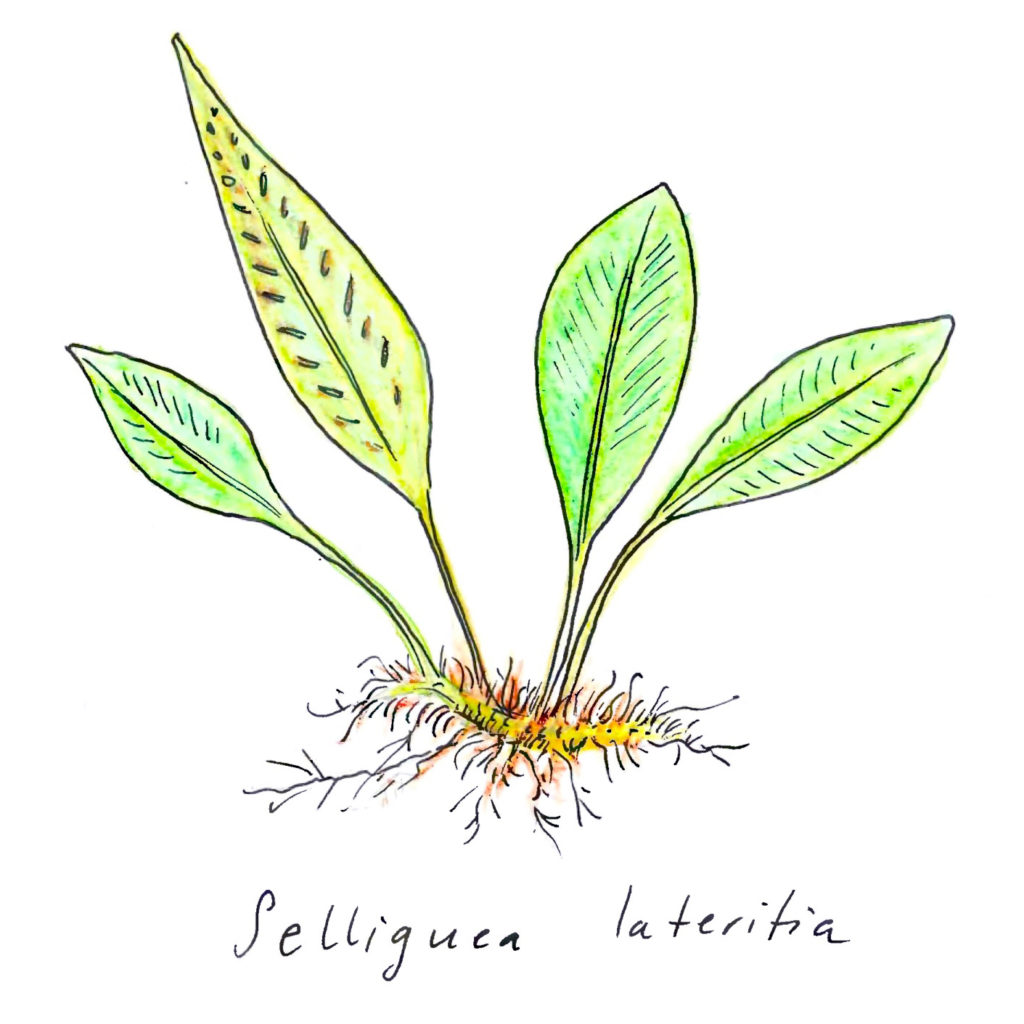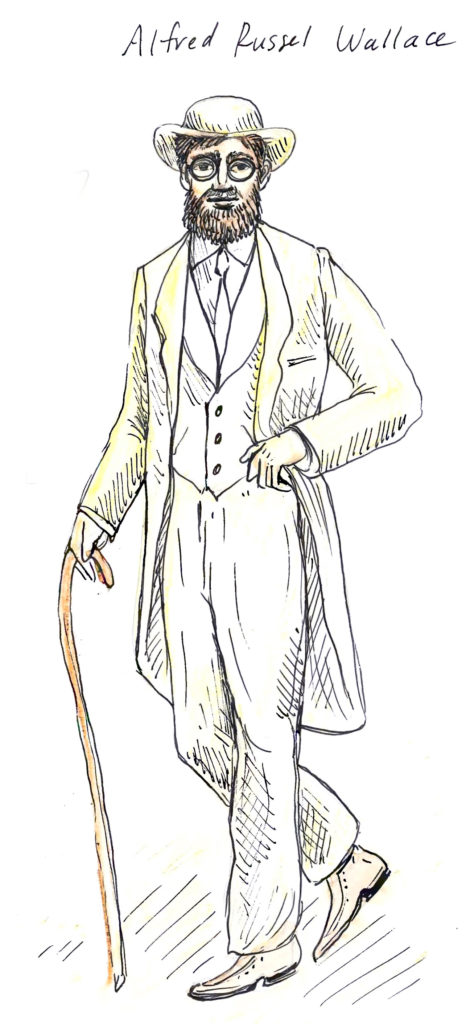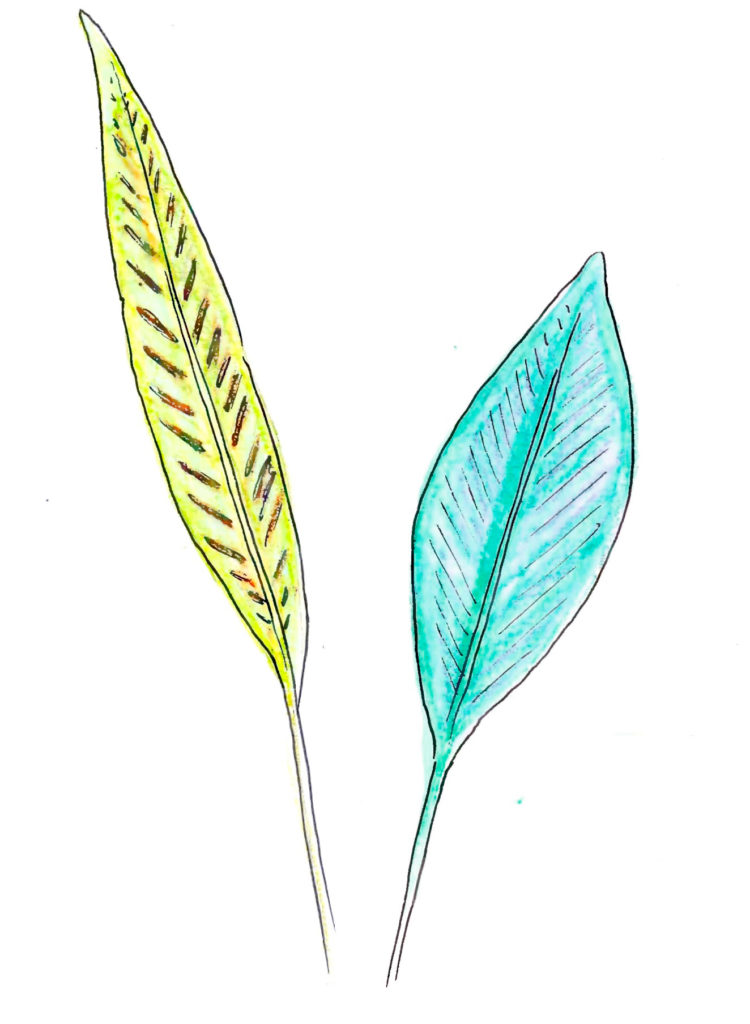I recently joined the research staff of the RBGE as a fern taxonomist focusing on the diversity of tropical southeast Asia. RBGE is perfect for me. Its herbarium houses rich historical collections, and the greenhouses harbor an impressive diversity of all major plant groups. My research involves both collections, and this can sometimes make for delightful discoveries.
Yesterday, for instance, I went to the research greenhouses and came across an unidentified species belonging to the tropical Asian fern genus Selliguea. I took a sample of this fern to the herbarium to see if it could be matched with properly identified specimens. It turned out to be Selliguea feei, but one thing led to another and I ended up spending half of the day revising specimens of several different species of Selliguea from western Malesia. My diligence was rewarded when I found a sheet that I identified as Selliguea lateritia with a hand-written label – “Wallace, Borneo and Singapore 1857”.

Alfred Russel Wallace was one of the most influential biologists who ever lived. In 1869, he published his scientific memoir The Malay Archipelago, a pioneering work that remains a fundamental text even for biogeographers today. Wallace invoked geologic history to explain why many animals of continental Asia—including iconic ones such as elephants, rhinos, and tigers—can be found on islands in western Malaya but not on islands in the eastern region. The disparity could not explained by the distance of the islands from the mainland, but whether they were situated west or east of a deep oceanic trench that occurs between the islands of Bali and Lombock. Wallace surmised that when sea levels were lower in the geologic past, animals could disperse to new regions on either side of the trench, but sea levels were never so low that animals could cross the trench itself. With this interpretation, he paved the way for much biogeographical and macroevolutionary thought.

Earlier, in 1858, Wallace published On the Tendency of Species to form Varieties; and on the Perpetuation of Varieties and Species by Natural Means of Selection co-authored with Charles Darwin. This is the publication that rocked the scientific community and fostered the development of evolutionary thought. But as literature, The Malay Archipelago stands up as a better book because it’s a personal narrative of scientific discovery. Wallace describes his encounters with orangutans, durians, Nepenthes, birdwing-butterflies, and malaria-induced fever-dreams. It’s a page-turner.
Wallace journeyed to both the American and Asian tropics, collecting thousands of biological specimens. Most of these are insects, birds, and other vertebrates; he rarely collected plants. This makes the Selliguea lateritia specimen, the first known collection of Wallace’s at RBGE, all the more noteworthy. Other fern collections of his, about 50 in total, are known from the herbaria of Cambridge University, University of Reading, the Muséum National d’Histoire Naturelle of Paris, and the Naturhistorisches Museum of Vienna.
In The Malay Archipelago Wallace mentions seeing the fern genera Dipteris and Matonia on Mt. Ophir, better known now as Gunung Ledang. These ferns are considered ‘living fossils’ because they appear essentially unchanged from their Mesozoic fossilized ancestors. He doesn’t mention collecting Selliguea however, but his correspondence with J.D. Hooker of Kew sheds some light. Wallace writes,
Among the curious things to be observed here was the singular colour of some of the leaves in the jungle. Some Ferns and Lycopodiums and some other plants growing near the ground were of a shining metallic blue colour, as if tinged by some gaseous exhalation. The same plant in other places I have observed of an ordinary green, so that it is due to something in the soil or atmosphere of the locality.
Letter to J.D. Hooker 1854

The brilliant colors described by Wallace are caused by iridescence, which is also seen in the pure brilliant colors of peacock feathers, elytras of beetles, and the leaves of some plants including Begonia, Selaginella, and ferns such as Selliguea. Unlike pigments, which impart color by absorbing certain wavelengths of light and reflecting others, iridescence is generated by microscopic structures that cause certain wavelengths of light to cancel and others to amplify. As Wallace observed, iridescence tends to develop in individuals growing in deep shade, whereas those developing in sufficient light do not become iridescent. It has been suggested that by reflecting blue light, iridescence helps plants absorb more red light—wavelengths that are deficient in deep shade. This would increase photosynthetic efficiency. Whatever the adaptive significance of iridescence, its results are spectacular and defy description.
Unlike beetle elytra and bird feathers, the iridescence of plant leaves disappears when they are dry. So if you want to see iridescent leaves, you will have to travel to the tropics, or visit the living collections at where you can see them firsthand. Meanwhile, I will be in the herbarium, hunting for more collections made by Alfred Russel Wallace. I cherish having a sheet at RBGE which physically connects us to his legacy. Now that I know to keep an eye out for them, with further curation, I suspect that others will turn up as well.
Written by Michael Sundue
Illustrated by Frances Cannon
